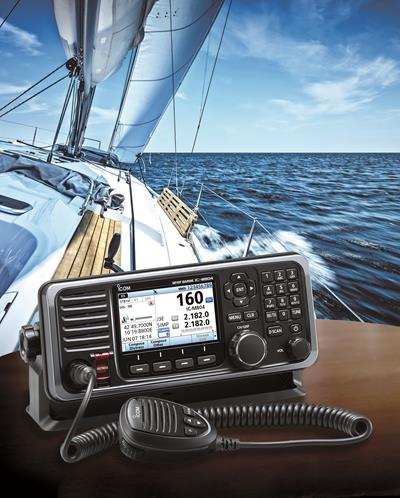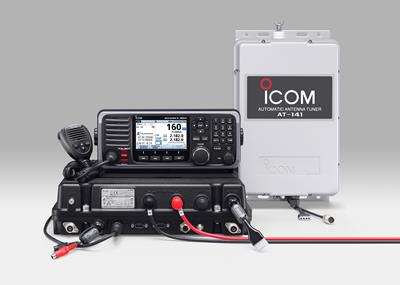An introduction to Marine SSB Radio

So what is SSB Marine Radio?
SSB Radio or Single Side Band Radio is a way of communicating over very large distances without the need for subscription or ongoing costs and tariffs. SSB is basically a 'mode' like FM or AM. SSB is a very efficient method of superimposing your voice or other information on a radio wave and then the transmission of that radio wave. A well installed SSB can give performance ranges in excess of 4000 miles. These types of ranges are dependant on experience, weather and proficiency with the use of the equipment and relies on a sound installation. The 3 main components of an HF/SSB RadioRadio Head or display unit
Mounted at the chart table. This is a large clear and easy to read radio control unit display, comes with reassuring robust rotary controls as well as a 'soft key' keypad layout. It is supplied as standard with a fist style microphone. SSB Transceiver
This is the core of the system. Usually mounted behind the scenes, the transceiver contains all the main electronics, PCB's and vital components for transmission and reception. Antenna Tuning Unit (ATU)
Usually mounted in the lazarette or back aft somewhere below decks, as close to the backstay as possible. The ATU automatically determines the 'length' of the usable antenna dependant on frequency, it achieves this by a system of relays and coils altering the electrical length of the antenna for best performance on the selected working frequency, the active part of your antenna begins at the ATU. Other key elements
Antenna
An SSB requires a minimum 7.5m antenna. The best and most common way of establishing a good antenna on a sailing yacht is by utilising the backstay. This requires the backstay to be insulated with two insulators, one approximately 2 metres above deck level from the transom and another approximately 1 metre below the masthead. Grounding
To achieve the ranges that an SSB is capable of, the grounding of the system is of vital importance. The salt water that your boat sits in offers the ultimate grounding point, there's none better. The sea water acts like a spring board giving a solid base in which the transmission can be sent out of the antenna, in a similar way to a swimmer who would use the edge of a swimming pool at the start of a race to push against. For SSB transmit, this solid grounding is of vital importance to how effective your system will be in use. The best and most proven method of grounding is by using a dynaplate or dynaplane. These are golden sintered bronze plates that are bonded to the outside of the hull below the waterline. The honeycomb compound of these plates gives you over 10 times their actual size in terms of surface area against water. The earthing or grounding to the dynaplates inside your boat is carried out by using 3" wide copper foil run back to the Icom antenna unit (ATU) and also ground linked to the transceiver. With grounding carried out as above you can expect the levels of 'super range' similar to those achieved by the Navy and Coastguard.
Using a HF/SSB radio
A marine SSB is a fully marinised open banded multi frequency transmitter and receiver capable of transmitting at 150 Watts. This system is not too dissimilar to the sets used by radio enthusiasts or HAM's. The levels of passion that such equipment can inspire in a user is noticeable. Using such equipment and getting the best out of it requires some time. Our best advice is to attend an LRC Course – Long Range Certification. Many of you would have already had your SRC – Short Range Certification for VHF. The LRC is an extended version of this and covers all aspects of SSB operation. Most LRC centres and classrooms use Icom equipment very similar to that which you will have on your own boat.Other Considerations

Summary
There are plenty of forums, web-sites and online testimonials with regards to the use of marine SSB for blue water cruising. Seasoned blue water sailors generally regard SSB amongst the most important and valuable pieces of equipment on-board. Appreciation and better understanding of the full benefits of SSB is generally assured following an LRC course. Most training centres also use Icom equipment. Our current Marine SSB is the IC-M804 MF/HF Class E Marine SSB transceiver. The IC-M804 is the latest in a long line of transceivers that have been considered industry standard throughout the world. The IC-M804 is currently the only CE-marked Class E DSC Marine MF/HF radio available in the market. (At time of publication (10/11/21). For more details about this product, please visit the IC-M804 MF/HF Class E Marine SSB transceiver product page. Other useful links- http://www.noonsite.com/Members/val/R2012-06-02-2
- http://www.sailboat-cruising.com/SSB-marine-radio.html
- https://www.latitude38.com/features/SSB.html

